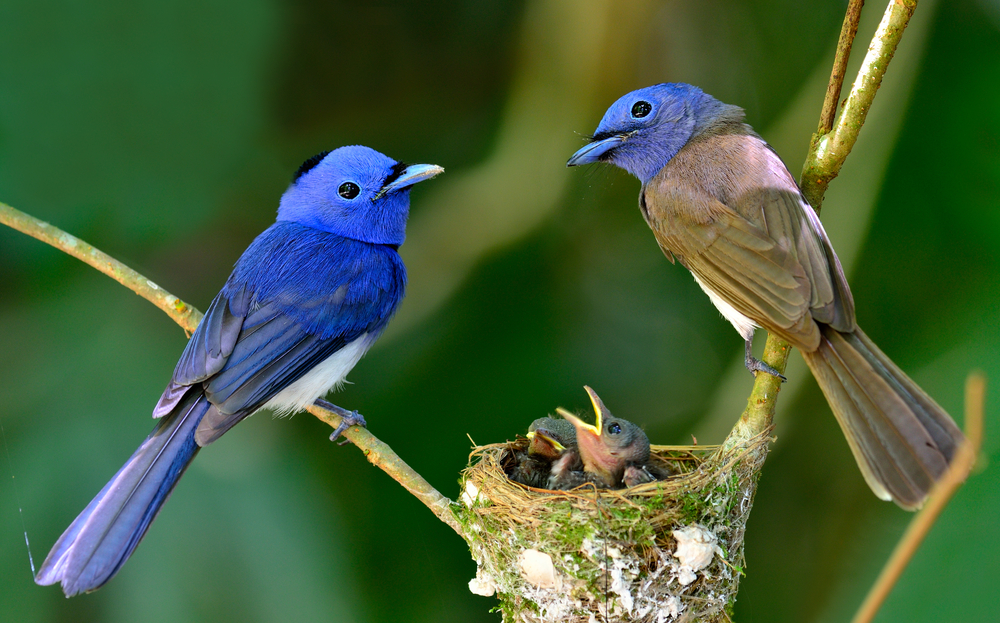Nest parenting, or birds nest parenting, where the child or children remain in the nest, and the parents come and go as the parent in charge, is not a completely new idea. I recall about twenty years ago, friends of my sister’s did it – leaving the child to live in the house, while the parents moved in and out of the house and a shared one-bedroom apartment. At the time it seemed radical.
These days it seems to be much more commonplace, and can be utilised as a short term transitional arrangement or a much longer term plan. It’s even the subject of a novel by fiction writer, Rachael Johns, (no relation, despite our shared surnames) called Flying the Nest.
In an opinion piece about the emotionally charged, yet light and entertaining book on nest parenting Johns writes: “Flying The Nest [is] the story of a woman whose life is turned upside down when her husband suggests they try nest parenting — although she had no idea their relationship was in trouble.
“As she struggles to come to terms with the end of her marriage and navigate shared custody with her ex, she’s forced to look deep inside herself and discover who she is, or, rather, who she wants to be.”
Separated families living across two homes often share stories about a child realising five minutes before they were due to go to school that they’d left their PE uniform or art project in the other house, or maybe a much-coveted toy resulted in bedtime tears when it was discovered it was left at the ‘wrong’ house. Nest parenting removes this concern, as the child remains in the home with all their belongings and all the familiarity of their usual home. And to come clean, this is a concept I’m trialling in my own life with my ex and our children. And my ex’s new partner is also in a nesting arrangement.
Nest parenting is thought to have officially originated in around 2000, in the United States, when a court agreed the best solution would be for children to remain in the home, with the parents swapping in and out. Initially, in many heterosexual relationships, nest parenting saw the father generally come to the house on weekends, while the mother was at home during the school and work week, however this has evolved to a more shared parenting model, generally 50/50.
While nesting is generally a choice parents make, a Canadian Court in 2003 declared in regard to one case that the parents were treating children like ‘frisbees’ and mandated a birds nest arrangement.

Nest parenting, or birds’ nest parenting, where the child or children remain in the nest, and the parents come and go as the parent in charge. Picture: Shutterstock
As research on nesting has been scant, it is not clear how widespread birdnesting is, however, estimates indicate that around 11% of separated families in the UK were following a birds nesting model. A US industry based research study showed that nearly 65% of people surveyed in the US believe that bird nesting will become much more common, with 52% of parents believing that nest parenting would cause children less upset and upheaval.
But why try it? In an article published in the Sydney Morning Herald some years back, a mother who is given the pseudonym “Lara” explains why her family tried it:
“”It meant we could see whether it was a trial separation or something more permanent, but the kids weren’t being uprooted from their home or being left by Mum or Dad,” Lara says. “There wasn’t any upheaval for them.”
There are many considerations with bird nesting – household chores, financial arrangements for the house and children, communication regarding the house, grocery arrangements (can you eat the food purchased by the other parent?!), whether or not partners are free to come to the house, and potentially sleep over, and also sleeping arrangements for the parents) – that is, whether the parents will share a room, changing sheets, and taking personal effects, like a hotel room, or whether the house has a suitable bedroom for each parent.
Furthermore, experts cited in the Sydney Morning Herald article suggest it’s rarely sustainable in the long term – something that was reinforced to me when I chatted with a relationship mediator, though they admitted they generally see situations where it isn’t amicably managed.
Co-parenting arrangements after separation or divorce require significant thinking – what’s in the best interests of the child or children, what is the percentage of care for each parent, and many other considerations. Nest parenting is one option, which can be used as a period of transition, while children adjust to new arrangements, or for a longer time period.
Research shows that children can adapt emotionally from even the worst divorces if the parents are working together as a team, communicating, and demonstrating a shared parenting model and nest parenting can be one way to demonstrate this to the child or children.
Despite the increasing focus on nest parenting in practice, the legal system, the media, television shows and novels, there has been relatively limited academic attention on the matter. One study took a qualitative approach to understand parents’ experiences of nest parenting. In this study, decision making around nest parenting was undertaken as it was deemed to be in the best interests of the children, and maintained the child’s health and wellbeing, minimising adjustment problems.
It was concluded that while nest parenting can be done as a long-term solution, it is particularly beneficial during a transitional period following separation, benefitting both children and the parents during this emotional time. Bird nesting can be deemed to be more costly, particularly if parents have a second residence each, however, it can also be deemed to be more affordable not requiring two family home set ups; this would depend on unique circumstances.
An article in Psychology Today reinforces this – it indicated that nesting tends to help children experiences a healthier experience of divorce, feeling more stable, and likely building their resilience. However, coming back to the point that providing parents are working as a team, children can cope with the effects of divorce, the findings do not necessarily point to nest parenting being the only solution for this.
There is significantly more research exploring joint physical custody, or equal parenting time, for example. This study showed that children aged 3 – 5 living in shared care arrangements (50/50 parenting, or approximately) tended to demonstrate less psychological problems compared with those living solely or primarily with one parent, however, further studies, particularly longitudinal research, is required to draw conclusive evidence regarding this.
Considerable research has shown that it is beneficial for children to maintain close relationships with both parents after separation, which is causing the rise in 50/50 parenting models.
Although some situations demand ex partners do not work together, and instead parallel parent, where there is an ability to work together, creative options can be sought out.
Ultimately, as long as the parents are focusing on the best interests of the children, working together to settle arrangements and discuss logistics, and seeking support where needed, any model of shared care will work, but with the expected rise in nest parenting models, it’s one to watch!
Raechel Johns is a Professor of Marketing and Service Management. Her research interests focus on technology service facilitated services, future of work, and community wellbeing.





